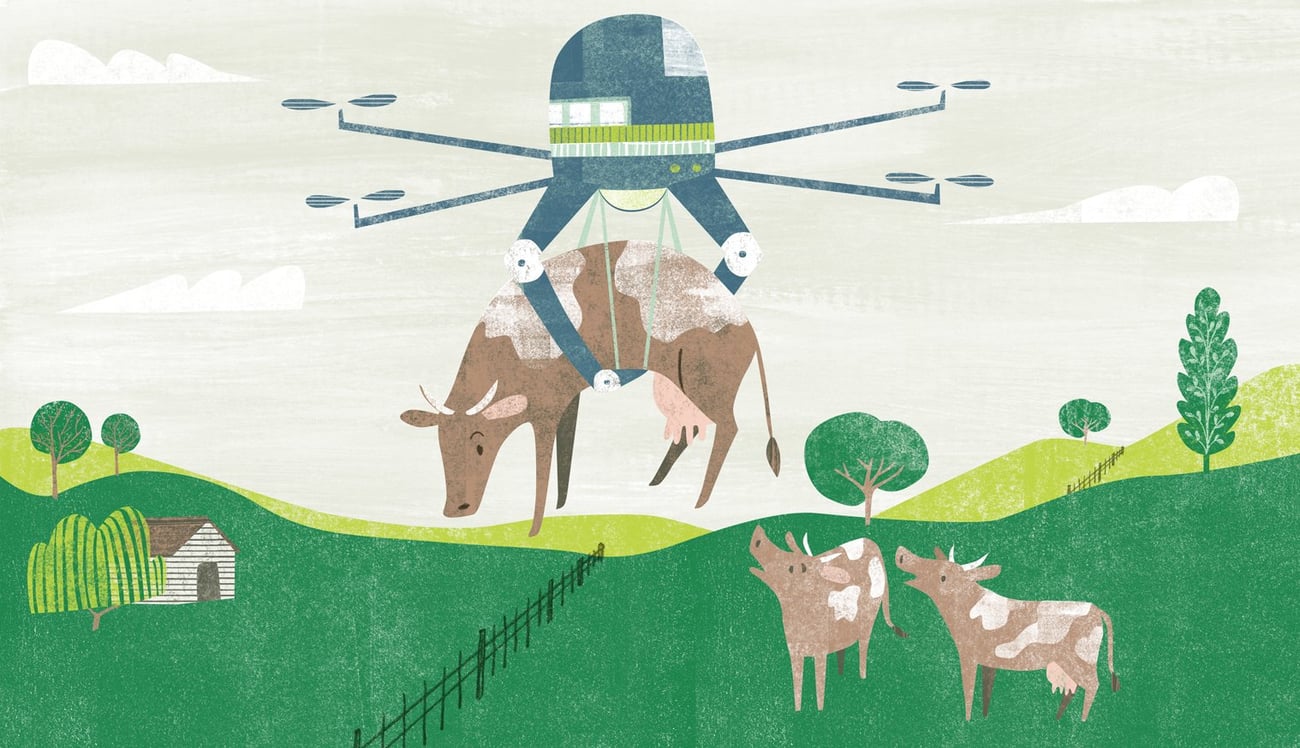
Military applications are the big end of the unmanned aerial vehicle market, tipped to be worth $8.35 billion by 2018. But there are some nicer creatures inhabiting drone environments of very different kinds. This warm, fuzzy side has been revealed in various ways recently.
Amazon’s Prime Air is a case in point; it’s the service the e-commerce giant hopes will spring from the R&D lab to get packages into customers’ hands in half an hour. And domestic goddess Martha Stewart took to her blog not long ago to post drone-captured images of her farm. Far from being just novel or nice to have, drone tech offers a big boost to the Kiwi economy – and there’s more to come.
We have a bunch of companies putting these machines to work, including Hawkeye UAV, Aeronavics, Tim Whittaker Photography and Skycam UAV. Together their endeavour includes 3D mapping and aerial photography, filming for movies and TV and use by the New Zealand Defense Force (yes, that military stuff again). The potential boost comes from the chance to use the drones in industries we already know we’re good at – and others we might be.
Drones work in situations where it doesn’t make sense to risk human life, or to put said humans (who have to be paid) into a craft that could otherwise do the same work remotely. The industries that stand to make quick gains are two pillar of our economy: aviation and agriculture; and some that demonstrate more recent strength: film making, architecture and public safety.
The Christchurch earthquake created the conditions for drones to soar – and burrow – to make a real difference. In these scenarios, unmanned craft can search wreckage, carrying infrared sensors to find trapped people. And they can survey buildings for damage. Drones are tipped to transform the rural sector globally. They take over laborious tasks like crop monitoring, data collection, topography, and stock and agrichemical use management that would otherwise be done with endless shoe leather, tractor miles or manned flights. Farming, meet big data. The Kiwi aviation sector grew up supporting farmers with services based on manned craft, like crop dusting. Now drones are a chance to save and make money by taking to the skies in a different way.
With movie franchises like the Lord of the Rings and The Hobbit making our name offshore, drone tech can also play a starring role by gathering aerial footage worthy of the big screen. Drone footage is well served in another boom sector, tourism, because it shows the country’s best side in a way that’s hard for humans to do.
Those are the opportunities for our proven stars, but where else could New Zealand get smart about using drones for economic gain? Drone-supported conservation is big global business and could help protect our rarer species. Aerial craft with radio frequency identification (RFID) sensors are being used to monitor animal populations across large and sometimes inaccesible land areas.
Oil and gas exploration can undermine conservation efforts, but it’s an industry that drones can boost by surveying magnetic field strengths in rock to help scientists detect the location of minerals. Drones can also keep watch on oil and gas pipelines above and below ground. And Facebook’s efforts could help us – albeit indirectly – to grow the contribution of our digital exports. With similarities to the Google Project Loon network of internet-powering balloons, Facebook’s Connectivity Lab’s plans to extend internet access to five billion more people apparently includes drones. Only around a third of the world’s population currently has web access.
With the right safety and privacy regulations, drones will find ever increasing applications because they’re either cheaper, faster, smaller, more expendable or simply fit for purpose. That’s why New Zealand should keep a watching brief and keep innovating. ×




